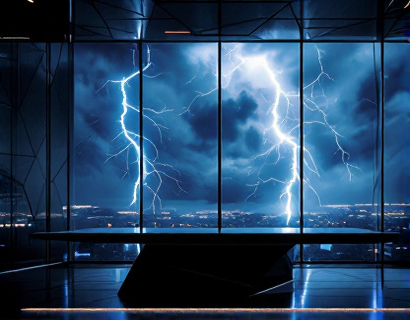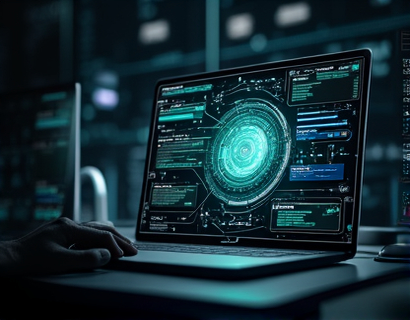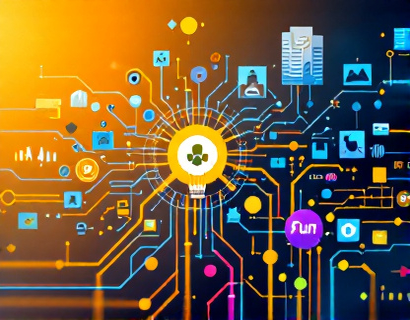Blockchain-Powered Notarization: Revolutionizing Document Security and Accessibility
In an era where digital transformation is reshaping industries, the need for secure, efficient, and transparent document management has become paramount. Traditional notarization processes, while crucial for ensuring the authenticity and legality of documents, often suffer from inefficiencies, lack of transparency, and vulnerability to tampering. Enter blockchain-powered notarization, a revolutionary approach that leverages the inherent properties of blockchain technology to transform document security and accessibility. This article delves into how this cutting-edge online notarization service is redefining the landscape for legal professionals and businesses, offering a seamless, efficient, and trustworthy solution.
Understanding Blockchain Technology
Before exploring the applications of blockchain in notarization, it's essential to understand the technology itself. Blockchain is a decentralized digital ledger that records transactions across multiple computers in such a way that the registered transactions cannot be altered retroactively. Each block in the chain contains a cryptographic hash of the previous block, a timestamp, and transaction data. This structure ensures that once data is recorded, it is immutable and transparent, providing a high level of security and trust.
Decentralized Trust in Notarization
Traditional notarization relies on a centralized authority, typically a government-appointed notary public, to verify the identity of the signatories and the authenticity of the document. While this system has served its purpose, it is not without flaws. Centralized systems are prone to single points of failure, potential corruption, and delays. Blockchain-powered notarization addresses these issues by distributing trust across a network of nodes, eliminating the need for a central authority. This decentralized approach ensures that no single entity can manipulate or alter the records, thereby enhancing the integrity and reliability of the notarization process.
Enhanced Security Measures
Security is the cornerstone of any notarization service. Blockchain technology offers robust security features that significantly reduce the risk of document tampering and fraud. Each document is assigned a unique cryptographic hash, which changes even if a single character in the document is altered. This hash is then recorded on the blockchain, creating an unbreakable link between the document and its verified state. Any attempt to alter the document would result in a mismatch in the hash, immediately alerting all network participants to the tampering attempt. This level of security is unparalleled in traditional notarization methods.
Transparency and Traceability
Transparency is another key advantage of blockchain-powered notarization. Every step of the notarization process, from the initial submission to the final verification, is recorded on the blockchain. This creates an immutable and transparent audit trail that can be accessed by all authorized parties. The traceability ensures that the history of a document is clear and verifiable, reducing disputes and increasing trust among parties involved. This transparency also simplifies compliance with regulatory requirements, as all necessary documentation is readily available and tamper-proof.
Streamlined Processes and Efficiency
The traditional notarization process often involves multiple steps, each adding to the overall time and cost. Blockchain-powered notarization streamlines these processes by automating many tasks through smart contracts. Smart contracts are self-executing contracts with the terms of the agreement directly written into code. When the predefined conditions are met, the contract executes automatically, reducing the need for intermediaries and manual interventions. This automation not only speeds up the process but also minimizes human error, ensuring a more efficient and reliable service.
Accessibility and Global Reach
One of the most significant benefits of blockchain-powered notarization is its accessibility. Documents can be notarized and verified from anywhere in the world, as long as there is an internet connection. This global reach is particularly beneficial for businesses operating in multiple jurisdictions, as it eliminates the need for physical presence in different locations. Additionally, the digital nature of the process makes it easier to handle large volumes of documents, further enhancing efficiency and reducing costs.
Case Studies and Real-World Applications
Several industries have already begun to adopt blockchain-powered notarization, reaping the benefits of enhanced security and efficiency. In the real estate sector, for instance, the process of verifying property titles and transferring ownership can be complex and time-consuming. Blockchain notarization simplifies this process, ensuring that all transactions are secure and verifiable. Legal professionals also benefit from this technology, as it provides a reliable and transparent way to handle sensitive documents such as contracts, wills, and legal agreements.
Another notable application is in the supply chain industry, where the authenticity and provenance of documents are crucial. Blockchain notarization ensures that each document in the supply chain is verified and tamper-proof, reducing the risk of fraud and ensuring compliance with regulatory standards. These real-world applications demonstrate the versatility and practical benefits of blockchain-powered notarization across various sectors.
Challenges and Considerations
While the benefits of blockchain-powered notarization are clear, there are still challenges and considerations that need to be addressed. One of the primary concerns is the regulatory landscape. As blockchain technology is relatively new, many jurisdictions are still in the process of developing frameworks to govern its use in notarization. Legal professionals and businesses must stay informed about local and international regulations to ensure compliance. Additionally, the adoption of this technology requires a certain level of technical understanding, which may pose a barrier for some organizations.
Another consideration is the interoperability of different blockchain platforms. For blockchain-powered notarization to be widely adopted, there needs to be a standardization of protocols and formats to ensure seamless integration and compatibility across different systems. Industry collaboration and standardization efforts are crucial to overcoming this challenge.
Future Prospects and Innovations
The future of blockchain-powered notarization looks promising, with ongoing innovations set to further enhance its capabilities. One area of development is the integration of artificial intelligence (AI) and machine learning (ML) to improve the efficiency and accuracy of the notarization process. AI can be used to automate the verification of documents, detect anomalies, and provide predictive insights, further reducing the need for human intervention.
Another exciting development is the exploration of cross-chain interoperability, which would allow different blockchain networks to communicate and share data seamlessly. This would enable a more unified and global notarization system, breaking down barriers and enhancing the overall user experience. As the technology matures, we can expect to see more widespread adoption and the emergence of new use cases across various industries.
Conclusion
Blockchain-powered notarization represents a significant leap forward in document security and accessibility. By leveraging the immutable and transparent nature of blockchain technology, this innovative approach addresses many of the shortcomings of traditional notarization methods. For legal professionals and businesses seeking reliable and trustworthy solutions, blockchain notarization offers a seamless, efficient, and secure alternative. As the technology continues to evolve, it is poised to play an increasingly important role in the digital transformation of document management, ensuring that the integrity and authenticity of documents are maintained in the digital age.










































